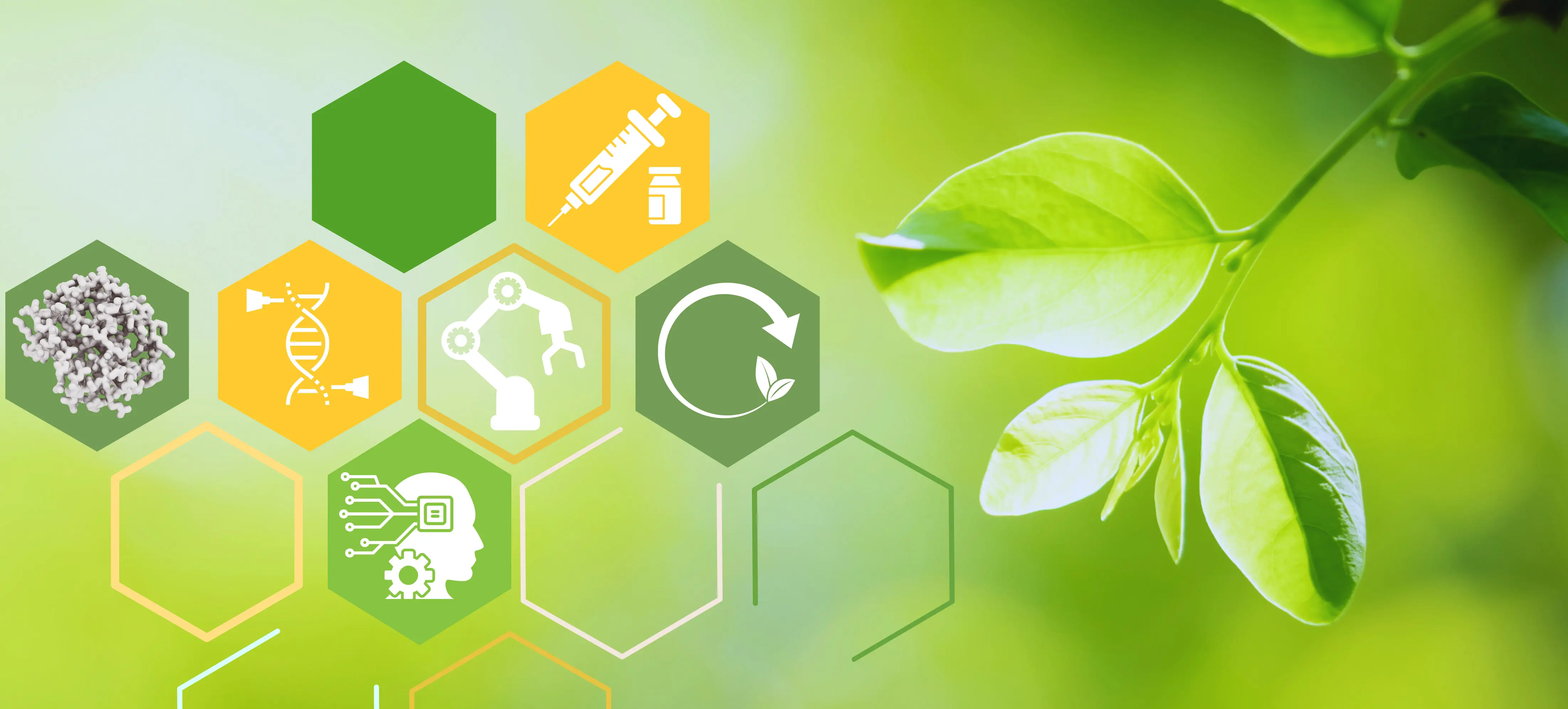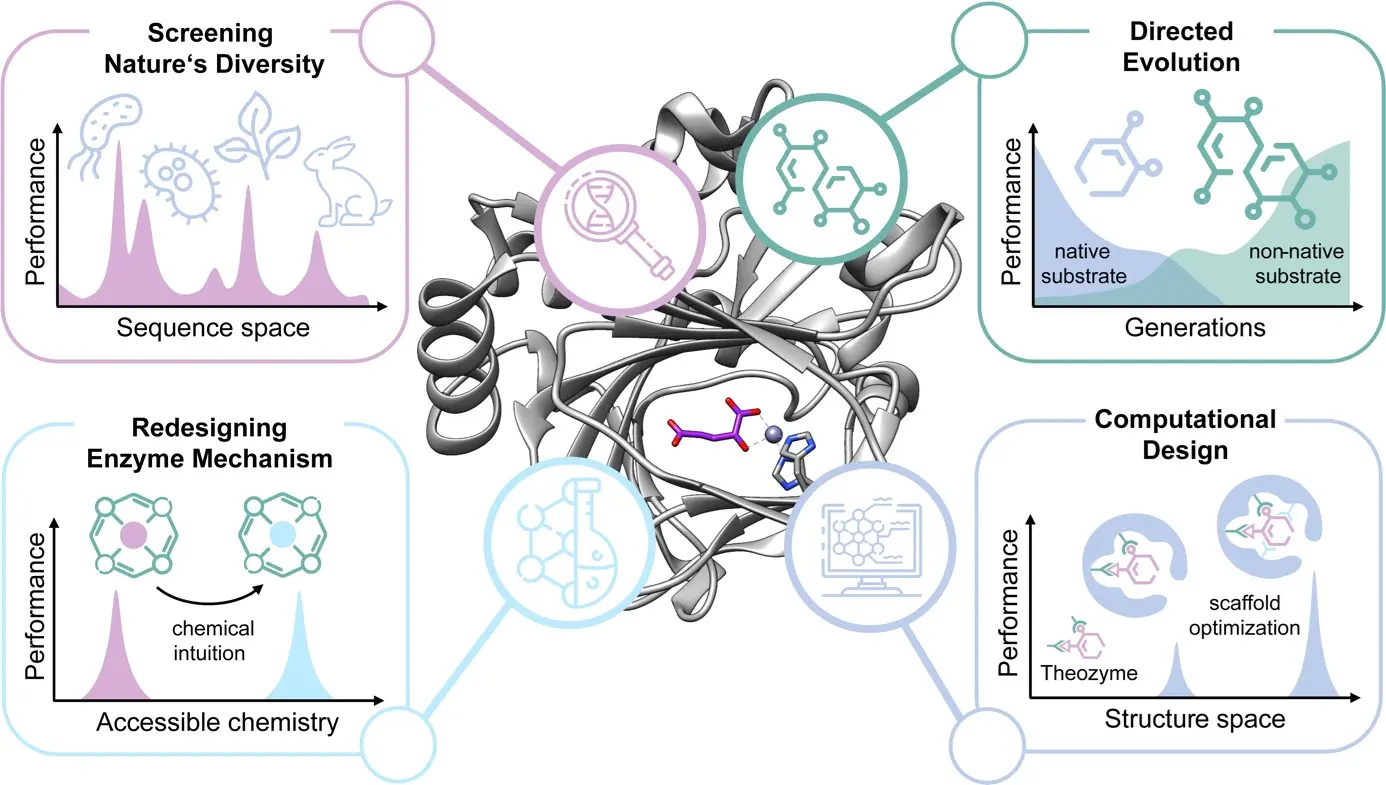Publication shows the success of biocatalysis from pharmaceuticals to environmental technology
As biocatalysts, enzymes can make many chemical processes "greener" and open up promising opportunities for various industries from pharmaceuticals to environmental technology. New analytical methods, the enormous increase in data volumes and machine learning have helped biocatalysis to achieve a boost in development. A recent publication in the journal Science, coordinated by Prof. Dr. Rebecca Buller from ZHAW and Prof. Dr. Uwe Bornscheuer from the University of Greifswald (DE), summarizes the developments in biocatalysis.
In biocatalysis, enzymes have been used for decades to produce semi-synthetic antibiotics, various building blocks for active pharmaceutical ingredients and basic chemicals such as acrylamide for polymers. Biocatalysis can make chemical processes more efficient, specific and energy-saving and, in an environment of energy shortages and climate change, is a beacon of hope for the development of greener chemistry and a comprehensive circular economy. In the last five years, innovative and groundbreaking progress has been made in this field: Key breakthroughs have been, for example, the development of new bioinformatics tools such as machine learning, which facilitate the customized design of biocatalysts, or the possibility of equipping enzymes with the ability to carry out new chemical reactions not known from nature. It is also possible to synthesize complex molecules such as starch from the greenhouse gas carbon dioxide by cleverly combining enzymes.
Enormous boost thanks to databases with protein sequences and machine learning
Natural enzymes are adapted to their metabolic function through evolution and must therefore be optimized for industrial applications using protein engineering methods. Although this has been done for almost three decades, important new methods have been developed in the last five years. Not only has the number of protein sequences stored in public databases increased twenty-fold, but reliable protein structures can now be generated automatically and used together with machine learning methods to adapt biocatalysts to the requirements of an industrial process in short development times. As a result, it is now possible to biocatalytically produce highly complex drug molecules such as Islatravir for the treatment of AIDS or therapeutic oligonucleotides. The first author of the Science article, Prof. Dr. Rebecca Buller, notes that the use of enzymes is becoming a reality in more and more areas: "The rapid development of bioinformatic and molecular biological methods is making the biocatalytic synthesis of increasingly complex products possible, also by teaching enzymes completely new tricks."
Enzyme to break down plastic thanks to protein engineering
The disposal of plastic waste is another global problem that biocatalysis can help with. In 2020, for example, a highly efficient esterase was described using protein engineering methods that can now be used to recycle PET plastic on an industrial scale. "The state-of-the-art enzyme engineering methods summarized in our review should therefore make it possible to establish efficient recycling processes for other plastics in the foreseeable future," predicts Prof. Dr. Uwe Bornscheuer.
The review article, written in collaboration with an international team of authors, summarizes the most important developments in biocatalysis over the last decade and illustrates this with impressive application examples. It also ventures a look into the future of this innovative field of research. In addition to the combination of chemical and enzymatic catalysis processes, the authors also see completely new fields of application for enzymes, for example in the production of RNA therapeutics, in gene therapy and other innovative contributions to resource conservation and climate protection.
Source
- Buller, R., Lutz, S., Kazlauskas, R.J., Snajdrova, R., Moore, J.C., Bornscheuer, U.T. (2023), From nature to industry: harnessing enzymes for biocatalytic processes, Science, 382, eadh8615.
The article can be found at: https://doi.org/10.1126/science.adh8615
Download
- Media Release "Publication shows the success of biocatalysis from pharmaceuticals to environmental technology"(PDF 213,5 KB)
- Caption: The figure shows current strategies for the design of biocatalysts which are explained in detail in the review. Reprinted with permission from R. Buller et al., Science, 382, eadh8615 (2023).
Fachkontakt
- Rebecca Buller, Leiterin Fachstelle Biokatalyse, Umwelt- und Prozesstechnologie, Institut für Chemie und Biotechnologie, ZHAW Wädenswil. 058 934 54 93, rebecca.buller@zhaw.ch
Kompetenzzentrum für Biokatalyse: www.zhaw.ch/icbt/biokatalyse-und-prozesstechnologie/
Medienkontakt
- Beatrice Huber, Media Relations ZHAW-Departement Life Sciences und Facility Management, Wädenswil. 058 934 53 66, beatrice.huber@zhaw.ch

